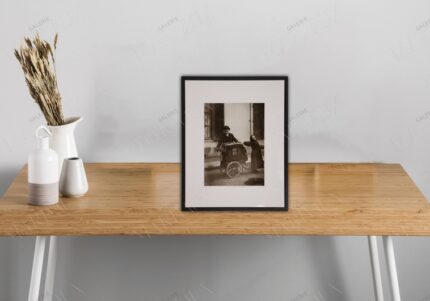Eugène Atget
Eugène Atget (1857–1927) was a French photographer best known for his dedication to documenting the architecture, streets, and inhabitants of Paris before its modernization under Haussmannization. Atget’s work serves as a comprehensive visual record of the old Paris, capturing everything from the grandeur of its historic buildings and gardens to the minutiae of daily life in its streets and shops.
Initially, Atget saw himself as a provider of documentary photographs for artists, selling his images to painters, architects, and stage designers as “documents for artists.” Over time, however, the artistic and historical value of his work was recognized. Atget meticulously cataloged various aspects of Parisian and French life, using a view camera to produce large-format glass plate negatives. This method allowed him to capture exquisite details and textures, making his photographs rich in content and atmosphere.
Atget’s approach was straightforward and unembellished, aiming to record the reality of his surroundings without artistic flourish. Despite this, his images are imbued with a lyrical quality, often evoking a sense of nostalgia and loss as they preserve views of a Paris that no longer exists.
In the last years of his life, Atget’s work gained the attention of the surrealists, who admired his ability to find the extraordinary in the ordinary, and he was championed by the American photographer Berenice Abbott, who purchased many of his negatives after his death. Abbott was instrumental in bringing Atget’s work to a wider audience, particularly in the United States, where his influence on the development of documentary photography was profound.
Today, Eugène Atget is regarded as a pioneer of documentary photography, and his work is celebrated in major museums and collections worldwide. His photographs not only offer a glimpse into the past but also inspire reflections on the nature of urban space, memory, and the passage of time.



